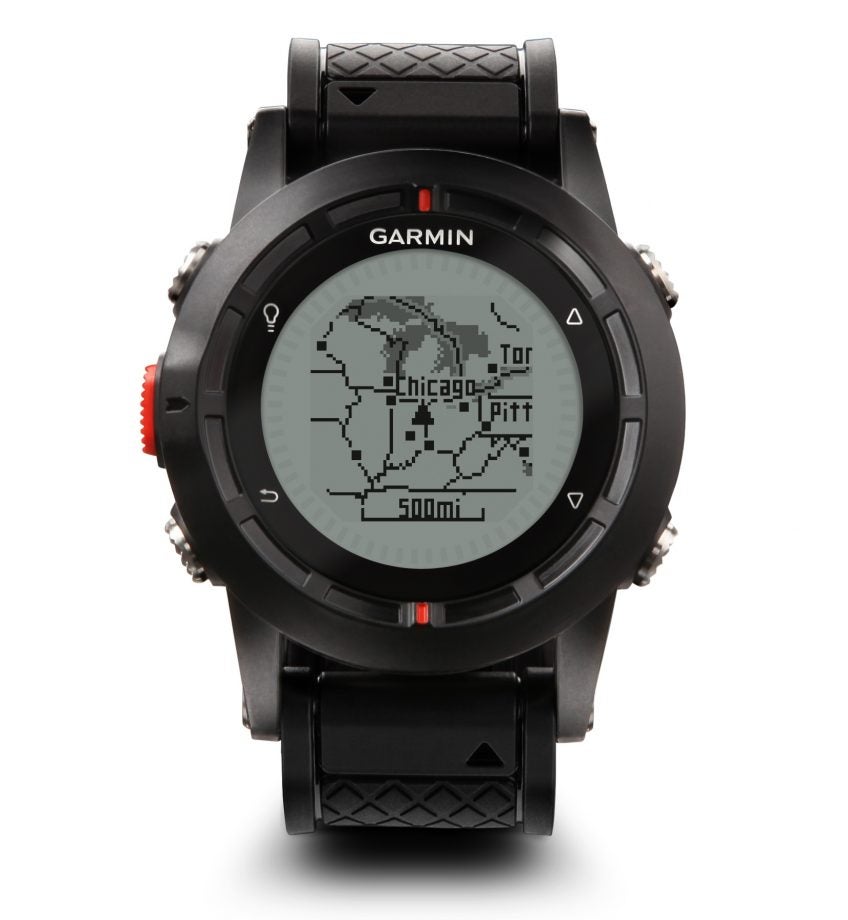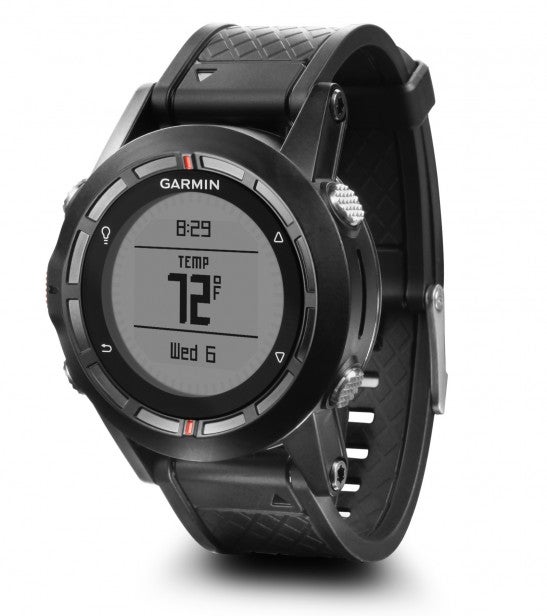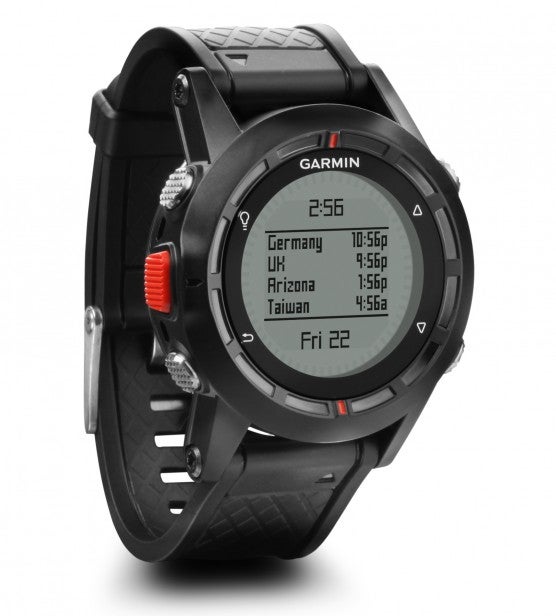Garmin Fenix Performer Bundle Review
Garmin Fenix Performer Bundle
Garmin’s fenix rises from the pack with hiking and sports features that are unique for a GPS watch.

Verdict
Pros
- Up to 50 hours of GPS usage in UltraTrac mode
- Compatible with ANT+ sensors
- PC or smartphone data upload and download
Cons
- Expensive
- No facility to add topographic maps
- Chunky
Key Specifications
- Review Price: £379.99
- GPS location tracking
- Storage for 10,000 tracking points
- Customisable waypoints and Points of Interest
- ANT+ compatible (heart-rate monitor included with Performer Bundle)
- PC or smartphone connection via USB, Bluetooth or ANT+
Garmin seems to have a GPS watch for every occasion these days. The company has had an extensive range of running watches for some years, such as the excellent Forerunner 610, and this was recently joined by the Swim, which as its name suggests targets pool-based sporting activities. Latest to arrive is the rather excitingly entitled Fenix, the focus of which isn’t quite so obvious from its name. We’re not sure what the connection might be to fireproof birdlife, and we suspect it has nothing to do with the latest album from Tenacious D either. No, this is a product aimed at rock climbers and hikers who like to stray far from the beaten track – perhaps for days on end.
Garmin already has an extensive range of GPS devices aimed at hiking, including the GPSMAP, eTrex, Dakota, Oregon, and Montana models, with the Oregon 550t being a particular highlight. The fenix sits somewhere in between these and the Forerunner range. The Performer Bundle we were testing comes with a heart-rate monitor in the box, so can be used to track your stamina cross country, although the fenix doesn’t have all the training-focused features of the Forerunner. Conversely, it also only comes with a basic world map on board, showing little more than the outlines of global land masses, and there is no facility to download detailed topographic maps to the device, so it’s not a full replacement for a handheld hiking GPS either.
What the fenix does have is the all-important built-in GPS receiver, plus an altimeter, barometer, digital compass, temperature sensor, as well as both ANT and Bluetooth wireless connectivity. The barometer provides a short historical readout, which you can use to help predict weather changes. You can cycle through displays for all this information, plus your heart rate if you have the monitor for this wirelessly connected.
However, the fun really starts when you press the big orange button on the left-hand side of the watch. This calls up the main menu, with Start GPS at the top. Once satellites have been locked, the fenix immediately begins recording tracking points. It only has 20MB of storage, but this is enough for 10,000 track points or 100 saved tracks, as well as 1000 waypoints, favourites or locations, and 50 routes. You can view the track as it is recorded on the mini map, and track back along it. You can also mark waypoints, in case you need to head back via a more direct route or find those locations again at a later date. As you travel, you can cycle through the readout screens to see details of your journey.
There’s a wealth of extra widgets available in the GPS Tools section, too. Sight ‘N Go lets you line up the orange flashes above and below the watch face with a distant landmark, which you can then set up as a destination. You can enter coordinates, which is a little fiddly with the fenix’s limited buttons. Points of Interest (POIs) can be used as destinations, although the fenix only comes with a small selection of major city centres as standard. But you can upload custom POI sets to the fenix as well, using a Garmin utility, with lots of free and premium third-party POI sets available.
The watch can also navigate to geocache locations, which we will be returning to a bit later in this review. There are almanacs for sun and moon rising and setting times, plus best hunting and fishing times. You can calculate an area by walking around its edges, and when out sailing mark a Man Over Board point and then navigate back to it.
There’s a huge range of customisation options. You can set the compass to point to true geographic, magnetic, or grid north. Lots of configuration profiles are available, for hiking, geocaching, running, mountaineering, fishing, sailing and more. These optimise the settings and views for the activity in question, for example putting the geocache entry at the top of the main menu after Start GPS. You can create your own custom profiles, too. This is a particularly handy feature, as the wealth of menu options can be hard to hunt through otherwise.
Where the fenix particularly wins out over handheld hiking sat-navs is in battery life, however. Most handheld models will give you at best 8-10 hours of usage. In regular GPS mode, the fenix will operate for 16 hours, but there’s also an UltraTrac option that only records one track point every minute, to save power. In this mode, the GPS will last 50 hours. Since the fenix will operate in pure watch mode for up to six weeks, you could get close to a week of seven-hours-per-day hiking in UltraTrac mode between charges. The fenix also supports WAAS for more accurate positioning, but this is currently only operational in the US.

With all these capabilities, the fenix is a chunky beast. We also wouldn’t say it has the rugged good looks of the best Casio G-Shocks. However, it is a solid device, rated waterproof to 50m. The large buttons are also easy enough to use when wearing thick gloves. Aside from the heart-rate monitor, the Performer Bundle also includes a natty alternative terracotta orange wrist strap, which can be attached instead of the standard black strap to show off that you have the slightly more expensive model.
You can download tracks and waypoints to a PC or upload data to the fenix, with ANT , Bluetooth and wired connections all supported. However, no ANT receiver is included in the box, with just a USB cable supplied for data connection and charge. This hooks on the back of the watch, latching onto exposed contacts. Although the fenix is compatible with Garmin’s Connect online workout tracking service, the primary desktop management software is an app for Windows and Mac called Basecamp. A version of Basecamp is also available for iOS, although it is only compatible with the iPhone 4S and above. Using Basecamp, you can view your fenix tracks and waypoints on its simple map, a slightly more detailed global map, or optional extra maps, but annoyingly not Google Maps, although you can send waypoints to Google Earth.
You can also use a browser plug-in to send various waypoint files to the fenix, in particular geocache data. So you can use the watch to help you find these hidden treasure troves. The watch supports the basic information about and description of geocaches, including hints. But the 70 x 70 pixel screen doesn’t have much room for text, making this very hard to read, although you can scroll through using the watch buttons. Nevertheless, its exemplary locational abilities mean it does a very good job of directing you towards a cache.
Verdict
The Garmin fenix is packed with useful functions for the serious hiker or mountaineer, although it does have a major drawback – its price. At £349 for the watch on its own, or an extra £30 for the Performer Bundle, it’s more expensive than any of Garmin’s Oregon range, where the latter’s touchscreen and topographic map-viewing abilities make them more appropriate for general orienteering and hiking. But if your outdoor activities require the long battery life, exercise features and convenience of the fenix, it’s a tempting proposition.
Trusted Score
Score in detail
-
Battery Life 10
-
Value 7
-
Features 9
-
Performance 10
-
Design 9
-
Usability 8
Features
| Screen Size (inches) (Inch) | 1.2in |
| General Features | Track recording, waypoints, POIs and geocaches |
Physical Specifications
| Live Services | No |
| Battery life (Hour) | 16 (standard GPS mode), 50 (UltraTrac GPS)hr |
| Height (Millimeter) | 49mm |
| Width (Millimeter) | 49mm |
| Depth (Millimeter) | 17mm |
| Weight (Gram) | 82g |


